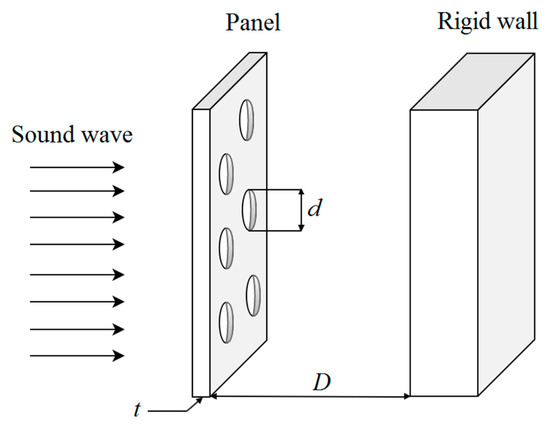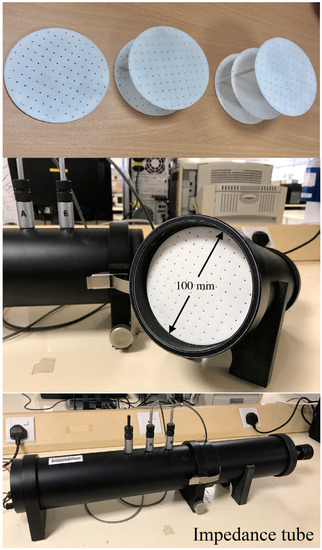Singapore: 3D Printing Helps Reduce Noise Pollution with MMP Panels
Researchers from Singapore are working to decrease noise pollution with the help of 3D printing, outlining their findings in the recently published ‘3D Printing of Polymeric Multi-Layer Micro-Perforated Panels for Tunable Wideband Sound Absorption.’ Attempting to overcome the limits of conventional manufacturing, the authors 3D print innovative multi-layer micro-perforated panels (MPPs) with tunable wideband absorption.
Due to so many busy and highly populated areas in the world, finding new ways to deal with noise pollution is a major concern. MPPs—comprised of perforations, a back wall, and an air gap, serve many purposes today, to include improving:
- Room acoustic conditions
- Ducts
- Acoustic window systems
- Noise barriers
The perforations, patterned in a lattice, allow for the desired acoustic resistance. A rigid wall is parallel to the panel, with an air gap in between creating a separate ‘acoustic stiffness.’
“The entire MPP system provides resonant absorption of sound,” stated the researchers. “It should be noted that the absorption effect is independent of the manufacturing materials of the panel.”
Metal and steel have been used in previous research to create MPP panels; however, conventional techniques tend to be expensive, whether industrial users employ laser cutting, etching, or micro punching.
For this study, the researchers designed and produced MPPS using SLS technology—a first in this type of manufacturing. Samples were designed for damping ‘major traffic noises,’ and optimizing ‘the area under the sound absorption curve at the target frequency range was introduced to design the structural parameters of the effective, acoustic absorption devices.’
Experimental results agreed with both theoretical and numerical results, with double- and triple-layer structures tuning the peaks of the absorption curves, allowing for broadened frequency bandwidths.
“The absorption curves of the double-layer MPP and the triple-layer MPP observe two and three peaks, respectively, for the given geometric parameters,” stated the researchers.
The research team noted that results with unpredicted noises and side peaks reflected wider frequency bandwidths and higher peak values of the MPPs. Also noted were more obvious discrepancies at the second peak.

The microscope images of a printed panel: (a) two perforations in imperfect circular shapes and (b) a part of the unsmooth rim with grains.
“The performances of the multi-layer acoustic structures were evaluated by Maa’s theory, FE simulations, and experiments in a wide frequency range. The frequency ranges were tuneable by adjusting the structural parameters such as the number of layers, the air gap distance, and the inter-layer distance,” concluded the researchers.
“The developed FE model was proved to be feasible for the numerical simulation of the multi-layer acoustic structures. An optimization method that maximizes the area under the sound absorption curve was introduced for the acoustic structures with the most effective sound absorption in target frequency ranges.”
3D printing is used more commonly today in sound absorption applications as researchers innovate with new products like metasurface-based absorbers, customized absorbers based on passive destructive interference, and more. What do you think of this news? Let us know your thoughts! Join the discussion of this and other 3D printing topics at 3DPrintBoard.com.
[Source / Images: ‘3D Printing of Polymeric Multi-Layer Micro-Perforated Panels for Tunable Wideband Sound Absorption’]
Subscribe to Our Email Newsletter
Stay up-to-date on all the latest news from the 3D printing industry and receive information and offers from third party vendors.
Print Services
You May Also Like
3D Printing Grows to $15.9B in 2024 Amid Shifting Industry Dynamics
The global additive manufacturing (AM) market reached $15.9 billion in calendar year 2024, according to “Q4 2024 3DP/AM Market Data and Forecast” from Additive Manufacturing Research (AM Research). Despite a...
3D Printing by the Numbers: Free AM Research Webinar to Dig into Market’s 2024 and 2025 Financial Performance
The additive manufacturing (AM) sector is at a pivotal moment, with industry growth stabilizing after a year of uneven performance. To help businesses and professionals navigate the evolving market, Additive...
RAPID + TCT 2025: Exploring 3D Printing’s Role in Defense
RAPID + TCT, North America’s largest additive manufacturing (AM) event, returns to Detroit this April, bringing together industry leaders, innovators, and government stakeholders to explore the latest advancements in AM....
3D Printing for Data Centers: New Report Sees “Exponential” Growth for AM Through 2033
The latest market study from Additive Manufacturing (AM) Research, in partnership with energize.am, entitled “AM for Data Centers: a 3D Printing Market Opportunity,” paints the picture of a generational opportunity...




























